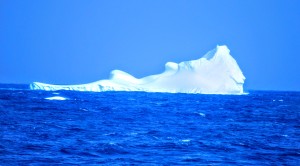Greenland
An iceberg is born as a roar, as a huge chunk of ice splits from a glacier and plunges into the sea.
But the iceberg’s story is far from over — these drifting islands of ice have much to tell us about our planet. An iceberg — which takes its name from the Dutch ijsberg — or mountain of ice — may lead a surprisingly long and rich life.
Depending on conditions like their size, water and air temperatures, icebergs may survive for days or even years. Eventually they break up and melt — often far from where they originated. Icebergs, in fact, can drift six miles a day or more.
Icebergs are found where glaciers — rivers of ice that flow slowly from mountaintop to sea — predominate: most commonly off the coasts of Antarctica, Greenland, Canada, and Alaska. When… Continue reading









